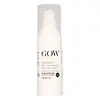What's inside
What's inside
 Key Ingredients
Key Ingredients

 Benefits
Benefits

 Concerns
Concerns

No concerns
 Ingredients Side-by-side
Ingredients Side-by-side

Water
Skin ConditioningAscorbic Acid
AntioxidantDimethicone
EmollientGlycerin
HumectantAlcohol Denat.
AntimicrobialPotassium Hydroxide
BufferingPolysilicone-11
Pentaerythrityl Tetraethylhexanoate
EmollientAcetyl Dipeptide-1 Cetyl Ester
Skin ConditioningAdenosine
Skin ConditioningSodium Hyaluronate
HumectantTocopherol
AntioxidantSilica
AbrasiveAmmonium Polyacryloyldimethyl Taurate
Emulsion StabilisingButylene Glycol
HumectantCaprylyl Glycol
EmollientC13-14 Isoparaffin
EmollientHydroxyethylcellulose
Emulsion StabilisingLaureth-7
EmulsifyingPEG-20 Methyl Glucose Sesquistearate
EmulsifyingPoloxamer 338
EmulsifyingPolyacrylamide
Sorbitan Laurate
EmulsifyingXanthan Gum
EmulsifyingBis-PEG/PPG-16/16 PEG/PPG-16/16 Dimethicone
EmollientCaprylic/Capric Triglyceride
MaskingPentaerythrityl Tetra-Di-T-Butyl Hydroxyhydrocinnamate
AntioxidantSalicylic Acid
MaskingParfum
MaskingWater, Ascorbic Acid, Dimethicone, Glycerin, Alcohol Denat., Potassium Hydroxide, Polysilicone-11, Pentaerythrityl Tetraethylhexanoate, Acetyl Dipeptide-1 Cetyl Ester, Adenosine, Sodium Hyaluronate, Tocopherol, Silica, Ammonium Polyacryloyldimethyl Taurate, Butylene Glycol, Caprylyl Glycol, C13-14 Isoparaffin, Hydroxyethylcellulose, Laureth-7, PEG-20 Methyl Glucose Sesquistearate, Poloxamer 338, Polyacrylamide, Sorbitan Laurate, Xanthan Gum, Bis-PEG/PPG-16/16 PEG/PPG-16/16 Dimethicone, Caprylic/Capric Triglyceride, Pentaerythrityl Tetra-Di-T-Butyl Hydroxyhydrocinnamate, Salicylic Acid, Parfum
 Reviews
Reviews

Ingredients Explained
These ingredients are found in both products.
Ingredients higher up in an ingredient list are typically present in a larger amount.
Ascorbic Acid is is pure Vitamin C. This form makes up the largest amount of vitamin C found naturally in our skin.
Not only is vitamin C great for your overall health and immune system, it also has plenty of benefits on your skin.
Vitamin C is best used for brightening skin. It improves dark spots, acne scars, and hyperpigmentation. This is because it blocks the process of skin darkening when exposed to UV.
Remember: Vitamin C should not replace sunscreen!
Your skin uses vitamin C to build collagen. Collagen is one key component in having a strong skin barrier and plump skin. Vitamin C also plays a role in regulating collagen, thus making it effective in improving wrinkles and fine lines.
Ascorbic acid shows potent antioxidant activity. As an antioxidant, it helps fight free-radicals. Free-radicals are molecules that may damage your skin cells. These antioxidants also protect skin against UV damage.
The best formulations include Vitamin E and/or ferulic acid. These two ingredients help stabilize and provide a boost in the benefits of ascorbic acid. This is because ascorbic acid becomes unstable when exposed to UV and air. In fact, you can tell your ascorbic acid has oxidized when it turns an orange-yellow color.
Ascorbic acid is generally compatible with other ingredients. However, using ascorbic acid with other active ingredients might cause irritation. Two ingredients: copper ions and benzoyl peroxide, will inactivate ascorbic acid completely.
Read more about other types of Vitamin C:
Foods rich with vitamin C include oranges, strawberries, broccoli, bell peppers, and more. When consuming Vitamin C, your skin receives a portion of the nutrients.
Learn more about Ascorbic AcidWater. It's the most common cosmetic ingredient of all. You'll usually see it at the top of ingredient lists, meaning that it makes up the largest part of the product.
So why is it so popular? Water most often acts as a solvent - this means that it helps dissolve other ingredients into the formulation.
You'll also recognize water as that liquid we all need to stay alive. If you see this, drink a glass of water. Stay hydrated!
Learn more about Water